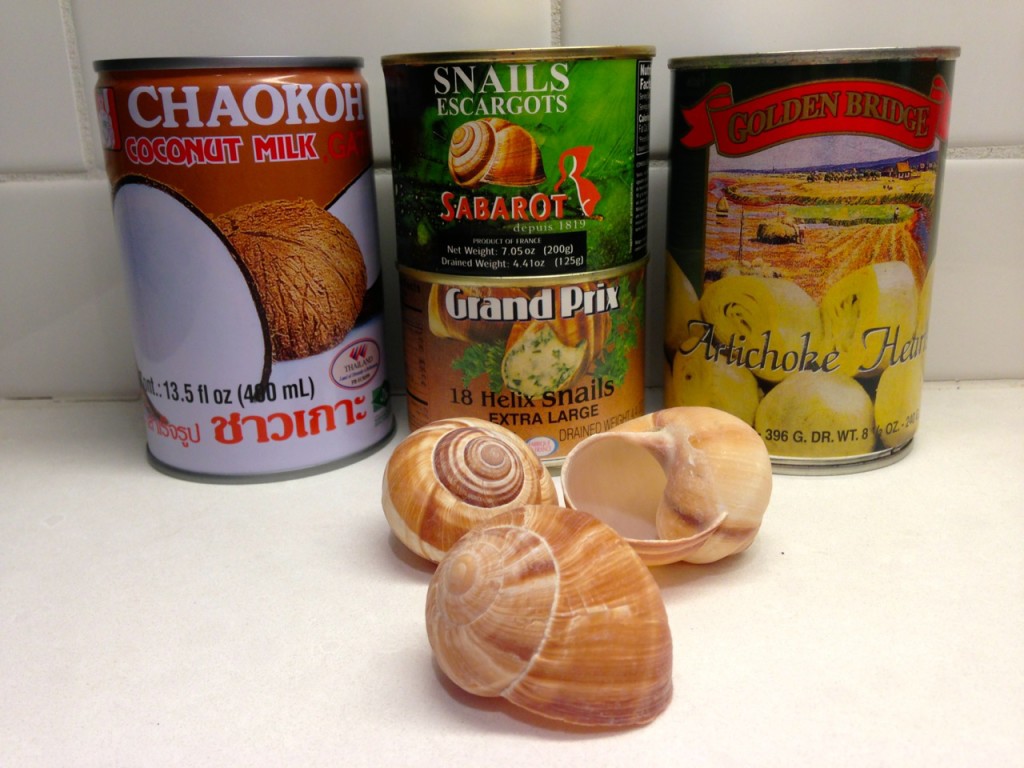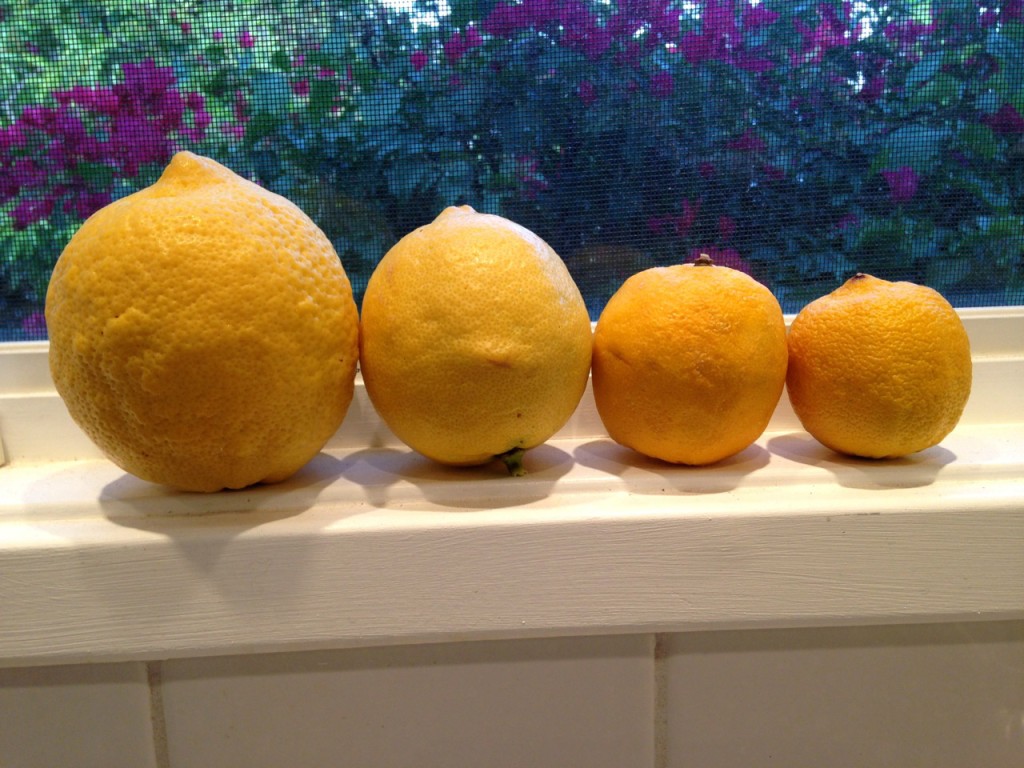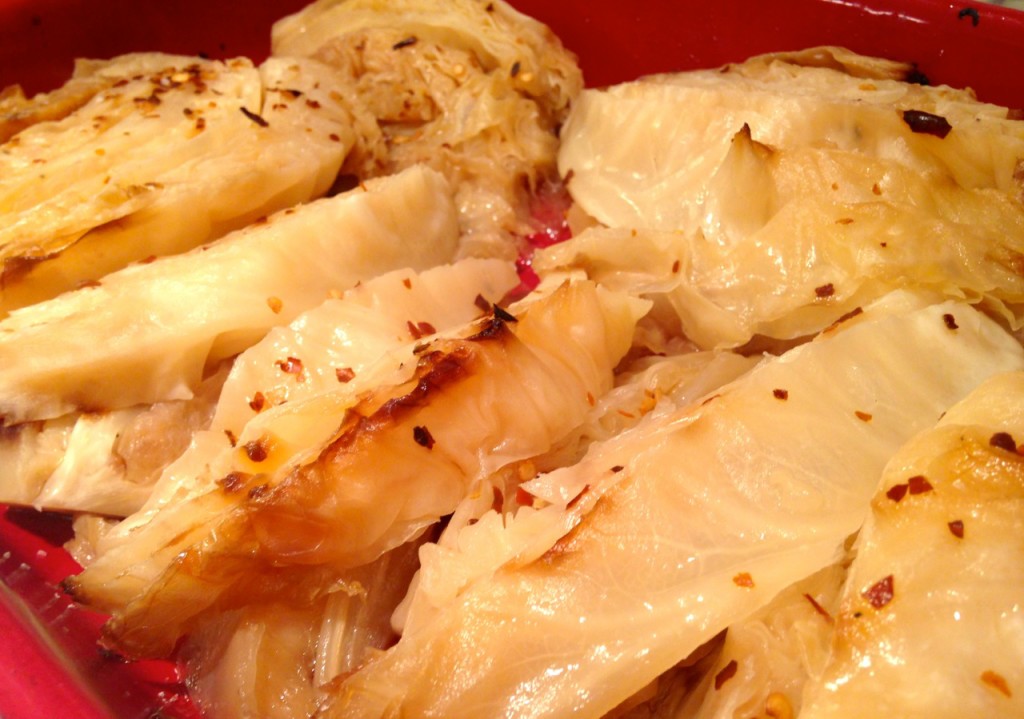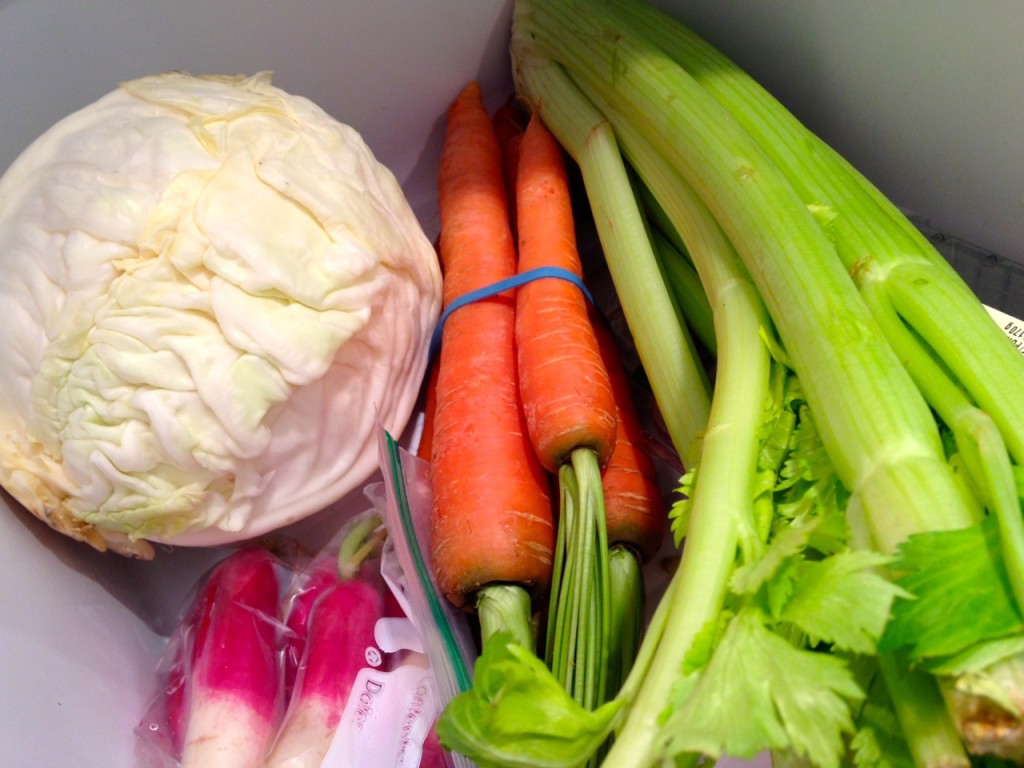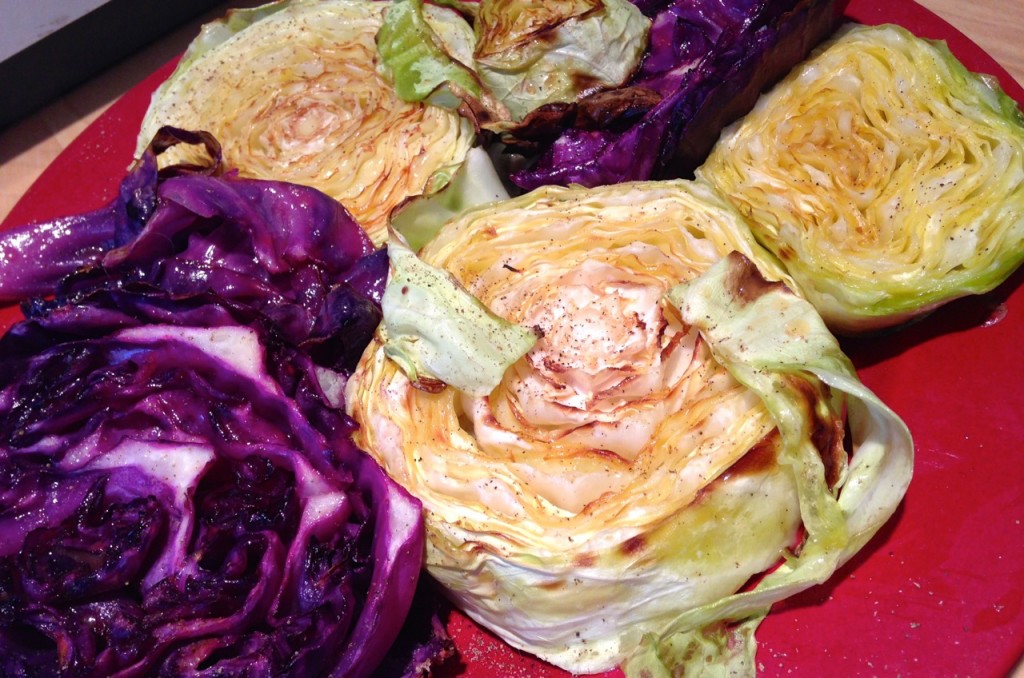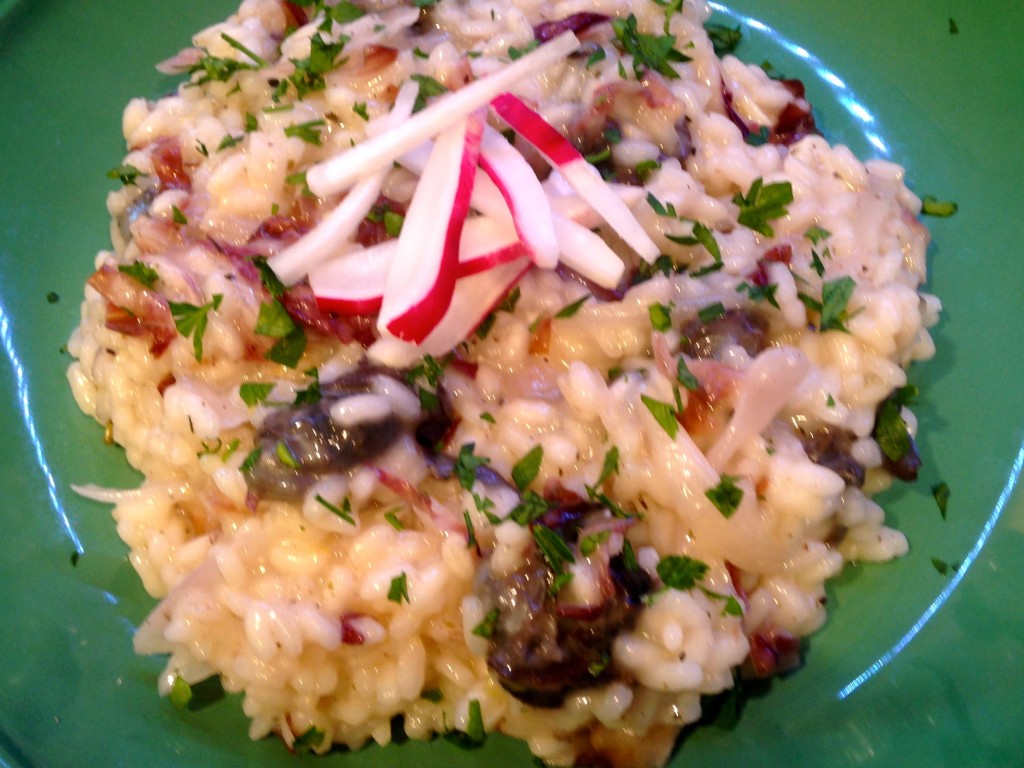 Escargots + Risotto = Escargotto (cute, eh?!)
Escargots + Risotto = Escargotto (cute, eh?!)
I have nothing against eating escargots out of their adorable little shells or from one of those almost as adorable little ceramic dishes made for that sole purpose, but it’s easy to forget there are other ways to enjoy them that don’t require what our practical pal Alton Brown calls a monotasker, a kitchen item that has only one function and just takes up storage space.
Recently I was in the mood to make risotto, and when I reached into the pantry for the arborio rice, I spied a can of escargots just waiting to be noticed. And I thought, “Why not?”
Note: If you contend that you’d never eat a snail but you have no problem chowing down on scallops, clams, oysters and calamari, just keep in mind that all of these critters are mollusks. Snails are essentially earthbound seafood. Fancy that!
I call this dish of risotto with snails “Escargotto,” and essentially you can make it by using a basic risotto recipe and stirring in rinsed canned snails at the end. They’re precooked, so they’ll only need heating up. I also stirred in a quarter of a head of roughly chopped radicchio and a teaspoon of lemon zest and garnished the dish with julienned French breakfast radishes. They add a nice crunch without the heat.
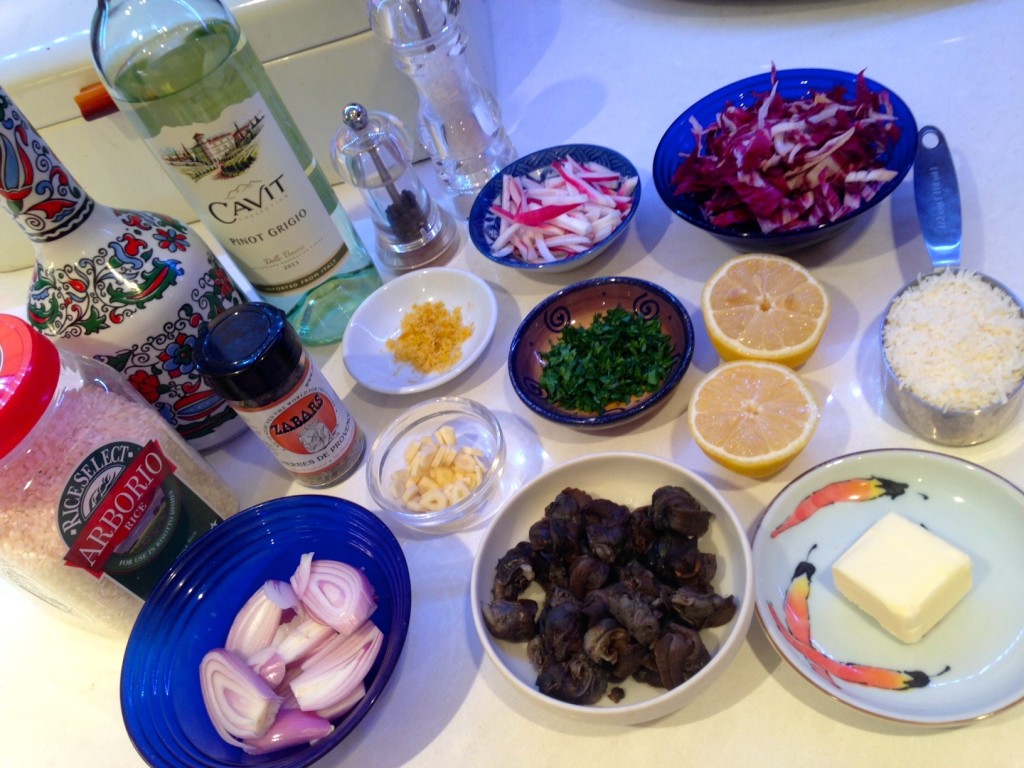 This is what I used for making Escargotto, because it’s what I like. But no law says this is the only way.
This is what I used for making Escargotto, because it’s what I like. But no law says this is the only way.
I’d like to encourage home cooks to move away from slavishly following recipes to the letter (unless you’re baking—then you must be meticulous, since you’re dealing with chemistry and proportions). If you like shallots, sauté a handful in a combination of butter and olive oil before adding the rice. If you don’t want to use butter, replace it with the same amount of olive oil. (On the other hand, if you opt to use all butter and no olive oil, take care that the butter doesn’t burn.)
The more you make a dish, the more you’ll discover your own tricks and preferences. If your showcase ingredient is mildly flavored—like snails—use a broth that won’t overpower it. I made a quick leek broth for this one, which added a velvety mouth feel and a delicate, complementary flavor.
It’s about balance and making something you like to eat. The more you do this, the better you’ll get at it and the tastier your results.
That’s thinking outside the shell, and it’s delicious.

